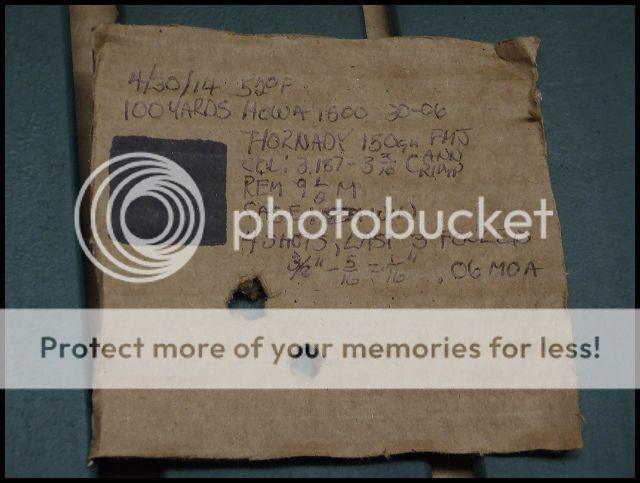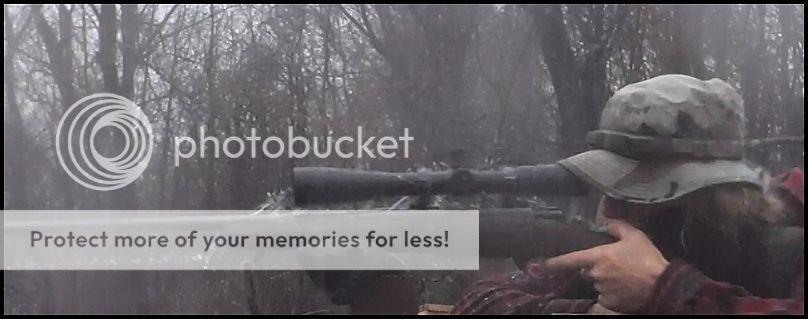Hi fellas,
To mark the occasion of Applied Ballistics becoming a proud sponsor of the LRH forum, I'd like to pose the following.
First, some background:
There's a common discussion topic based on the observation that some rifles seem to shoot smaller angular groups at longer ranges, for example, 1 inch groups at 100 yards, and also 1 inch groups at 200 yards. This could also be expressed as 1 MOA at 100, and 1/2 MOA at 200. I'll refer to this as non-liner dispersion, which is anytime a rifle groups smaller MOA at farther range.
I've read many discussions about it over the years. I've done a great deal of 6-DOF modeling in attempts to understand bullet dispersion, and have come up short on a ballistic explanation for this phenomena.
Here's my current working theory for explaining the reports of non-linear dispersion:
The first conclusion many shooters come to is that the bullets are actually flying in a way that keeps them from dispersing proportionally downrange. Most discussions about stability, yawing, epicyclic swerve, etc stem from this line of thought. So far I've been unable to identify any aero-ballistic mechanism for this to be possible.
Furthermore on this theory; Lets assume for a moment that the bullet really is flying a corkscrew flight path of constant, or diminishing magnitude. In order for the groups to be angularly bigger at shorter range would *require* that the bullets always passed thru the 100 yard target on the OUTER edge of their orbit, and pass thru the longer range target on the INNER edge of their orbit. We're already out on a limb by assuming that epicyclic swerve is happening (modeling suggests that this only happens on a very small scale, like 0.030") but now we have to also require that there's some pattern to how the bullet passes thru short range vs. long range targets. To me this concept feels like it's way out on a limb, over thin ice.
Now let's take another view.
If you think about how these observations come about, which is someone shooting groups at 100, THEN at 200, a different explanation is possible. This line of thought suggests that the rifle shoots bigger at short range due to some aiming error that's present at short range which is corrected at long range. Parallax is an optical mechanism which can certainly explain this. Another is the size of the target in relation to the reticle being more favorable for 'aiming small' at longer ranges. Finally there's the physiological aspect where shooters may be 'trying harder' to shoot groups at longer range.
The key aspect of this second line of thought is that it allows for these observations (of non-linear dispersion) to be valid, but don't require the bullet to fly a corkscrew flight path.
In order to know which of the above explanations is the true cause of the observed non-linear dispersion, a 'shoot thru' target was constructed at the Applied Ballistics Lab.
You can see the shoot thru target here:

Basically there's a thin sheet of paper held above the line of sight to the 300 yard target. Groups fired at the 100 yard target 'pass thru' and print on the 300 yard paper. By screening the SAME group at both ranges, we can see exactly how the shot group actually disperses. We can aim at the 100 yard paper and shoot a group, then aim at the 300 yard paper and shoot a group, and see how they compare at both ranges. In this way, we hope to discover IF non-linear dispersion actually happens, or if it's just a perception caused by some kind of aiming error. Here's a picture showing the 100 and 300 yard targets with groups printed on both:

Interesting note; the top midle, and top right aim points were shot with a TRG-42, 338 Lapua Mag 1:10" twist and 300 grain Cutting Edge bullets. This was a deliberate test of a low stability case. Note that even though the bullets were key-holing at 300 yards, the groups weren't all that bad and were still proportional to their group at 100 yards. Why the bullets were stable enough to print round holes at 100 and not at 300 is another mystery. To be sure it wasn't interference from the paper, I also shot this same load direct to 300, and got the same keyholes.
Nevertheless; to date we've fired dozens of combinations of calibers, bullets, twist rates, etc. So far NOTHING has shown anything but near perfect linear dispersion.
So where does this leave us?
We have a logical dilemma: "we haven't observed non-linear dispersion in any of the testing that we've done, but we still can't claim with certainty that it doesn't happen because we haven't tested every possible rifle and combination". There are still many shooters swearing they see it on a regular basis.
It's disappointing that we haven't reached a more decisive conclusion, but I'm not giving up yet. So what's the next step? Well, certainly it must be something dramatic, and involve live fire! So here it is.
The Applied Ballistics 'Shoot Thru Target' Challange
I'm inviting any shooter who has a rifle which exhibits non-linear dispersion to the Applied Ballistics Laboratory in Michigan to demonstrate the effect. I'll pay your travel and hotel stay (If you successfully demonstrate the effect, I'll even pay your *return* travel as well ) The objective is to produce a repeatable example of this phenomena so it can be studied and hopefully we can learn what's going on.
) The objective is to produce a repeatable example of this phenomena so it can be studied and hopefully we can learn what's going on.
This is a friendly challenge with the objective of learning. As much fun as it is to discuss all the theories online, I'd really like to actually solve this one.
Any takers?
-Bryan
To mark the occasion of Applied Ballistics becoming a proud sponsor of the LRH forum, I'd like to pose the following.
First, some background:
There's a common discussion topic based on the observation that some rifles seem to shoot smaller angular groups at longer ranges, for example, 1 inch groups at 100 yards, and also 1 inch groups at 200 yards. This could also be expressed as 1 MOA at 100, and 1/2 MOA at 200. I'll refer to this as non-liner dispersion, which is anytime a rifle groups smaller MOA at farther range.
I've read many discussions about it over the years. I've done a great deal of 6-DOF modeling in attempts to understand bullet dispersion, and have come up short on a ballistic explanation for this phenomena.
Here's my current working theory for explaining the reports of non-linear dispersion:
The first conclusion many shooters come to is that the bullets are actually flying in a way that keeps them from dispersing proportionally downrange. Most discussions about stability, yawing, epicyclic swerve, etc stem from this line of thought. So far I've been unable to identify any aero-ballistic mechanism for this to be possible.
Furthermore on this theory; Lets assume for a moment that the bullet really is flying a corkscrew flight path of constant, or diminishing magnitude. In order for the groups to be angularly bigger at shorter range would *require* that the bullets always passed thru the 100 yard target on the OUTER edge of their orbit, and pass thru the longer range target on the INNER edge of their orbit. We're already out on a limb by assuming that epicyclic swerve is happening (modeling suggests that this only happens on a very small scale, like 0.030") but now we have to also require that there's some pattern to how the bullet passes thru short range vs. long range targets. To me this concept feels like it's way out on a limb, over thin ice.
Now let's take another view.
If you think about how these observations come about, which is someone shooting groups at 100, THEN at 200, a different explanation is possible. This line of thought suggests that the rifle shoots bigger at short range due to some aiming error that's present at short range which is corrected at long range. Parallax is an optical mechanism which can certainly explain this. Another is the size of the target in relation to the reticle being more favorable for 'aiming small' at longer ranges. Finally there's the physiological aspect where shooters may be 'trying harder' to shoot groups at longer range.
The key aspect of this second line of thought is that it allows for these observations (of non-linear dispersion) to be valid, but don't require the bullet to fly a corkscrew flight path.
In order to know which of the above explanations is the true cause of the observed non-linear dispersion, a 'shoot thru' target was constructed at the Applied Ballistics Lab.
You can see the shoot thru target here:

Basically there's a thin sheet of paper held above the line of sight to the 300 yard target. Groups fired at the 100 yard target 'pass thru' and print on the 300 yard paper. By screening the SAME group at both ranges, we can see exactly how the shot group actually disperses. We can aim at the 100 yard paper and shoot a group, then aim at the 300 yard paper and shoot a group, and see how they compare at both ranges. In this way, we hope to discover IF non-linear dispersion actually happens, or if it's just a perception caused by some kind of aiming error. Here's a picture showing the 100 and 300 yard targets with groups printed on both:

Interesting note; the top midle, and top right aim points were shot with a TRG-42, 338 Lapua Mag 1:10" twist and 300 grain Cutting Edge bullets. This was a deliberate test of a low stability case. Note that even though the bullets were key-holing at 300 yards, the groups weren't all that bad and were still proportional to their group at 100 yards. Why the bullets were stable enough to print round holes at 100 and not at 300 is another mystery. To be sure it wasn't interference from the paper, I also shot this same load direct to 300, and got the same keyholes.
Nevertheless; to date we've fired dozens of combinations of calibers, bullets, twist rates, etc. So far NOTHING has shown anything but near perfect linear dispersion.
So where does this leave us?
We have a logical dilemma: "we haven't observed non-linear dispersion in any of the testing that we've done, but we still can't claim with certainty that it doesn't happen because we haven't tested every possible rifle and combination". There are still many shooters swearing they see it on a regular basis.
It's disappointing that we haven't reached a more decisive conclusion, but I'm not giving up yet. So what's the next step? Well, certainly it must be something dramatic, and involve live fire! So here it is.
The Applied Ballistics 'Shoot Thru Target' Challange
I'm inviting any shooter who has a rifle which exhibits non-linear dispersion to the Applied Ballistics Laboratory in Michigan to demonstrate the effect. I'll pay your travel and hotel stay (If you successfully demonstrate the effect, I'll even pay your *return* travel as well
This is a friendly challenge with the objective of learning. As much fun as it is to discuss all the theories online, I'd really like to actually solve this one.
Any takers?
-Bryan


